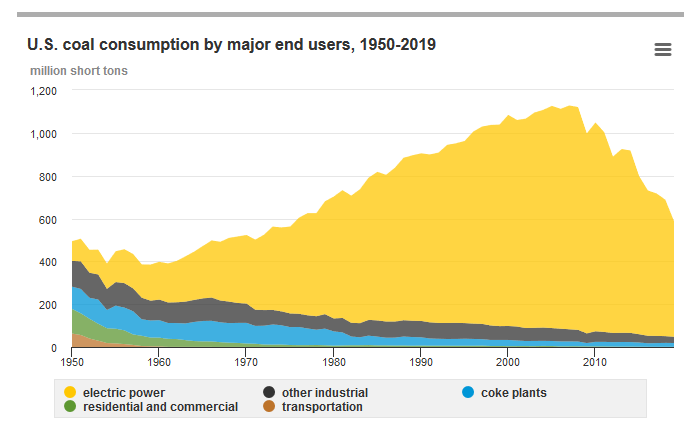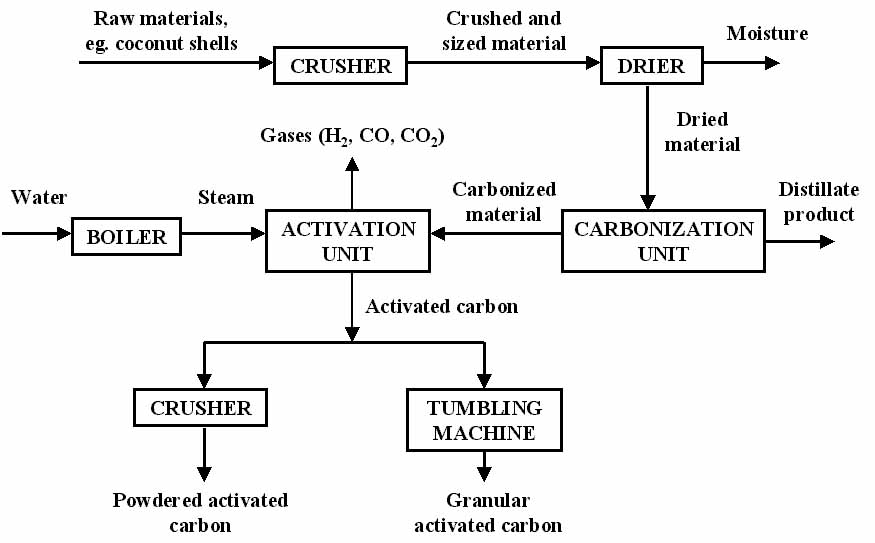Coal is a solid, black, readily combustible fossil fuel that contains a large amount of carbon-based material – approximately 50% of its weight.
Coal has been used as an energy source for nearly 2000 years. For example, coal was widely used for home heating in early 17th century England. But the Industrial Revolution dramatically increased the demand for coal. Specifically, James Watt’s improvements to the steam engine made coal useful for doing work.
By the 1830’s coal mining was a booming industry in the eastern United States with coal supplied for industry and steam locomotives on newly developed rail roads.
In 2010 coal accounted for 9.2% of Canada’s primary energy production. Coal in the modern world is the most widely used and abundant fossil fuel. Coal exhibits a 109 year reserve to production ratio (as of 2012). The total amount of coal reserves is approximately 10 tonnes, the United States is home to the largest individual coal reserves.
What is Coal ?
Coal is a rock formed from the decomposition of plant life. It is primarily composed of carbon, with many other trace elements. Coal’s high energy density and extensive reserves found in nature make it useful as a fuel for electricity generation in coal-fired power plants, and in some places, heating.
Coal is considered low-cost in that to build a coal fired power plant, extract coal from the ground and to burn it does not cost a company as much as other fuel processes (because of the externalities that it ignores). Coal is also plentiful; there is a large reserve globally. This has lead to the people burning a lot of coal for centuries, which we continue to do today.
Coal formation began several hundred million years ago (check out chronozoom) under environmental conditions vastly different than the ones present today. Acidic waters slowed the decay of organic matter and allowed this dead organic matter, mainly plankton, to accumulate in layers. The old material was then pushed deep into the ground while being covered with sediment and eventually formed into a crumbly brown material referred to as peat. This peat contains some of the energy that was generated by photosynthesis when the plants were alive.
Geological processes buried this peat further, the high pressures and temperatures caused material to lose much of its hydrogen and oxygen atoms, resulting in a carbon rich material referred to as coal. Major types of coal include anthracite, lignite, sub-bituminous and bituminous coal. The type of coal is a function of where it is formed and how far evolved it is, anthracite and bituminous coal are the most developed types of coal and are therefore almost entirely composed of carbon.
How Coal is Formed ?
The formation of coal takes a significant amount of time (on the order of a few million years), and the first coal-bearing rock units appeared about 290-360 million years ago, at a time known as the Carboniferous or “coal-bearing” Period. As well, there are extensive coal deposits from the Cretaceous age – about 65 to 144 million years ago.
The formation of coal begins in areas of swampy wetlands where groundwater is near or slightly above the topsoil. Because of this, the flora present produces organic matter quickly – faster in fact than it can be decomposed. In these areas, layers of organic matter are accumulated and then buried. It is these layers of organic material that then form coal. The energy in coal initially comes from the Sun, and is energy from sunlight trapped by dead plants.
The formation of coal begins in areas of swampy wetlands where groundwater is near or slightly above the topsoil. Because of this, the flora present produces organic matter quickly – faster in fact than it can be decomposed. In these areas, layers of organic matter are accumulated and then buried. It is these layers of organic material that then form coal. The energy in coal initially comes from the Sun, and is energy from sunlight trapped by dead plants.
Coal formed millions of years ago when the earth was covered with huge swampy forests where plants – giant ferns, reeds and mosses – grew. As the plants grew, some died and fell into the swamp waters. New plants grew up to take their places and when these died still more grew. In time, there was thick layer of dead plants rotting in the swamp. The surface of the earth changed and water and dirt washed in, stopping to decaying process. More plants grew up, but they too died and fell, forming separate layers. After millions of years many layers had formed, one on top of the other. The weight of the top layers and the water and dirt packed down the lower layers of plant matter. Heat and pressure produced chemical and physical changes in the plant layers which forced out oxygen and left rich carbon deposits. In time, material that had been plants became coal.
Process
The process that creates coal varies slightly in different areas depending on the plants and conditions that are present, but the overall process is similar. There are two main phases in coal formation: peatification and coalification. Bacterial activity is the main process that creates the peat during peatification. Increasing temperature and pressure from burial are the main factors in coalification. To form coal, the following steps are followed:
- Plant matter in mires and wetlands, such as ferns, shrubs, vines, trees, and algae dies and accumulates on the surface. Initially the organic matter is decomposed by bacteria, yielding carbon dioxide and methane.
- The plant matter becomes buried, and are no longer exposed to air. Anaerobic bacteria then starts to decompose the material. Burial and accumulation can occur for several thousands of years, producing several meters of partially decayed plant matter known as peat.
- When this peat is deeply buried, water and other compounds is squeezed out from the increasing pressure and the lowest quality of coal, lignite, begins for form.
- Continued burial, resulting in increasing pressures and temperatures, causes this low quality lignite coal to be transformed into higher quality “black coals”. First lignite becomes sub-bituminous coal, then bituminous coal, and finally the highest quality anthracite coal. As these transformations occur, the amount of water and other compounds in the coal decreases and the coal becomes more dense. Along with this comes a higher carbon concentration.
Coals are classified into three main ranks, or types: lignite, bituminous coal, and anthracite. These classifications are based on the amount of carbon, oxygen, and hydrogen present in the coal. Coal is defined as a readily combustible rock containing more than 50% by weight of carbon. Coals other constituents include hydrogen, oxygen, nitrogen, ash, and sulfur. Some of the undesirable chemical constituents include chorine and sodium. In the process of transformation (coalification), peat is altered to lignite, lignite is altered to sub-bituminous, sub-bituminous coal is altered to bituminous coal, and bituminous coal is altered to anthracite.
Lignite – is the lowest rank of coal – which means that it has the lowest heating value and lowest carbon content. Although lignite is more solid than peat it crumbles when shipped long distances. Most lignite in the U.S. is in North and South Dakota, Montana, and Texas. Lignite is used to generate electricity. Other uses include generating synthetic natural gas and producing fertilizer products.
Bituminous – is intermediate in rank and sometimes called soft coal. It appears smooth when you first see it, but look closer and you’ll find it has many layers. It is the most abundant kind of coal. It has a high heating value, but it also has a high sulfur content. More than 80% of the bituminous coal produce in the U.S. is burned to generate electricity. Other major coal users are the cement, food, paper, automobile, textile and plastic industries. Another important industrial use is to provide coke for iron and steel industries. Bituminous coal derivatives, or by-products can be changed into many different chemicals form which we can make paint, nylon, aspirin and many other items.
Anthracite – is the highest rank of coal which means that it has the highest heating value and highest carbon content. It is very hard, deep black, and looks almost metallic because it is brilliantly glossy. Anthracite burns longer, with more heat and with less dust and soot than other types of coal. The primary market for anthracite is for heating homes. Nearly all of the anthracite in the U.S. is in Pennsylvania, but there are some small beds in other states.



